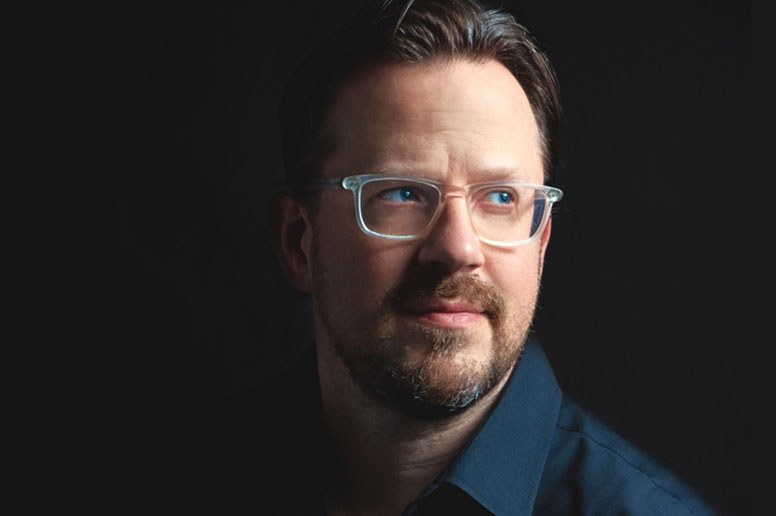How to Create a Video Game Character: Key Principles
Good games require good characters. Remember Super Mario, Tomb Raider or Sonic the Hedgehog? These games were built in the previous century but their characters can still hook players around the world. Who knows if Super Mario could be just as successful without the short, pudgy, Italian plumber, or if Tomb Rider had a strong sexy man as a protagonist? In fact, likeable characters might be the reason why a game becomes popular in the first place.

Did you know that some of the world’s most famous video game characters are more recognizable than popular athletes and musicians? Unique characters often become iconic. They can beat celebrities in popularity.
Some characters are so powerful that they appear in movies. Adapting a video game to the big screen increases the popularity of this game even further. There is no doubt you need a great character to win people’s hearts across all mediums.
So how do you create a game character that will make players wait until your game comes out?
At 3D Studios Studio, we help game developers create art assets for memorable game experiences. We work with characters a lot and have a large portfolio featuring realistic, stylized and cartoon models. After 10 years in this creative business, we’ve learned what it takes to produce a unique and likeable character. We’ve decided to share some of our findings with you in this article. But before we get into the key principles of creating a game character, let’s first talk about why character is such an important part of any interactive narrative.
Why character is almost as important as the game itself
Whether it’s a sandbox game or a shooter, all games need good characters for players to have fun. Here is why.
Characters help create immersive experience and encourage replayability
Memorable and charismatic characters directly influence a video game’s immersive quality. When the player likes the characters and enjoys interacting with them, they would definitely want to finish the game, while remaining completely engaged.
And if you craft a really good character, it can make players want to experience the game over and over again. Replayability is the primary aim of all game developers. They want to make the user return to their product repeatedly.
Let’s take Geralt of Rivia from the Witcher series as an example. This character is among the top-50 most iconic game characters. Living in the evil and cruel world, Geralt combines the brutality of an experienced swordsman, while also remaining a very humorous and wise person. Just watch this video if you don’t believe us.
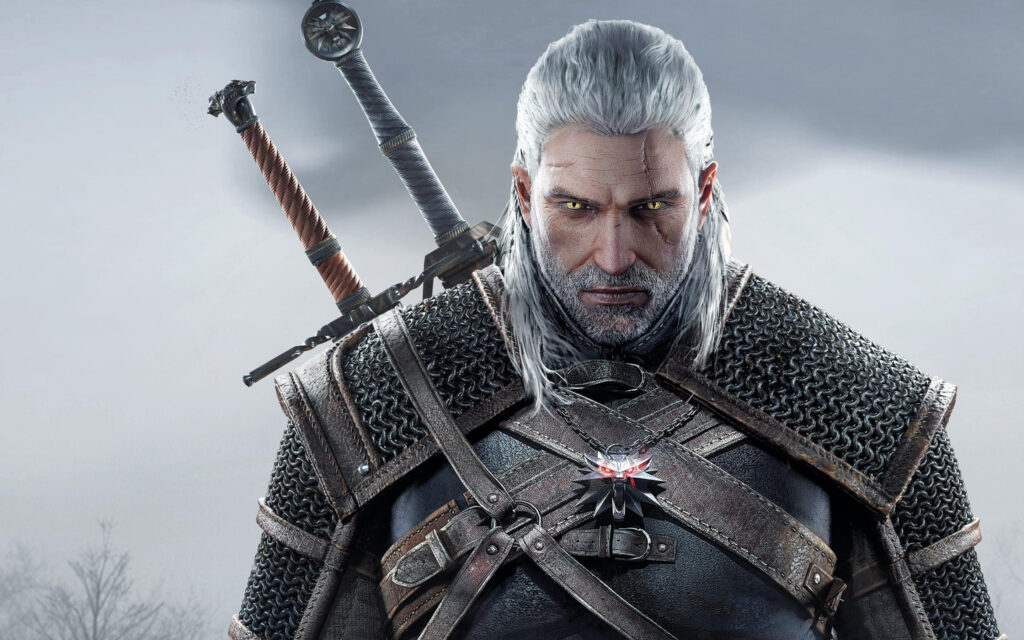
The Witcher series has three main standalone games, two expansion packs and six spin-off games. The availability of so much content about the same character only proves that gamers feel an urge to replay the games with Geralt of Rivia because of his charisma, even though Geralt is pretty crude and cynical.
Players relate to their virtual characters
“This character is just like me!” That’s a common reaction people have when a character does something they would do themselves. If a player can get into the skin of a character they’re controlling, your game will have higher chances for success.
A great example of character development in video games is Arthur Morgan from Red Dead Redemption 2.
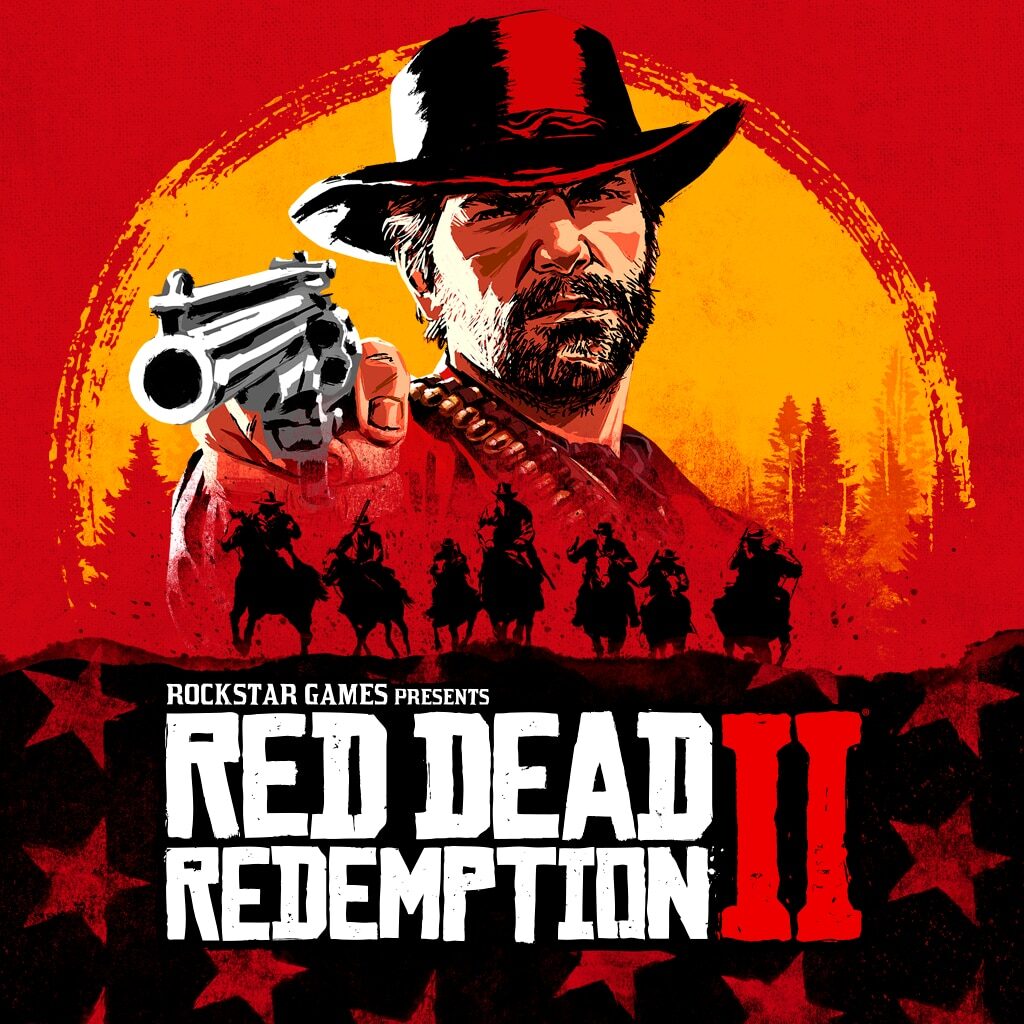
In RDR2, gamers can control Arthur however they want. You want Arthur to be a bank robber and merciless vigilante? No problem. Or are you more into saving strangers? You can do that, too! Depending on the actions the player takes throughout the game, Arthur will end up either as an evil thief, or a stand-up guy everyone loves and respects, and that’s what makes the game so special – freedom to do what you’re feeling is right.
Here’s what gamers themselves say about Arthur:
“Sometimes he’s deep…sometimes he’s funny”, “He chooses his needs over his wants”, “He’s a man of few words but his actions in combat are the loudest”. So, people love Arthur, no doubt.
“And how successful was the game?” You may ask. 44 million units sold worldwide — that’s how successful.
Characters can leave a powerful impact
Have you ever felt encouraged to do something because of someone’s words or actions? Probably, yes. And who said that video game characters can’t leave such an impact? Just like real humans, virtual characters can inspire others to be good people or fight against corruption and evil. They also can give hope for a better world.
Do you remember Link from The Legend Of Zelda and his continued determination in defeating Ganon? He inspires players to never give up, no matter how often darkness tries to take over. Or Red, the Pokémon trainer. He shows anyone can do great things, no matter their size or where they’re from.
So, it’s clear at this point that memorable characters can make your game a hit. The question is: how do you create such a character? Let’s find out.
What makes a good game character?
As we’ve figured out, every strong game character is a living individual (although they don’t breathe real air, but you got the point). To create a fictional character that would win gamers’ hearts, you need to care about four things: personality, backstory, appearance, and the character’s flaws and weaknesses.
Personality
Only robots don’t have any personality (allegedly), so leaving game characters without a personality would be a crime. When working on the character design, it is good to use specific archetypes.
To better understand this, let’s look at a professional treasure hunter, Nathan Drake — the protagonist of the Uncharted video games. This character is a good example of a seeker archetype. Nate is presented as a freedom-loving fortune seeker and action pro. Known for being quick-witted and immensely lucky in the face of danger, Nate possesses deep knowledge of history – no wonder, he’s spent basically all his life studying it.
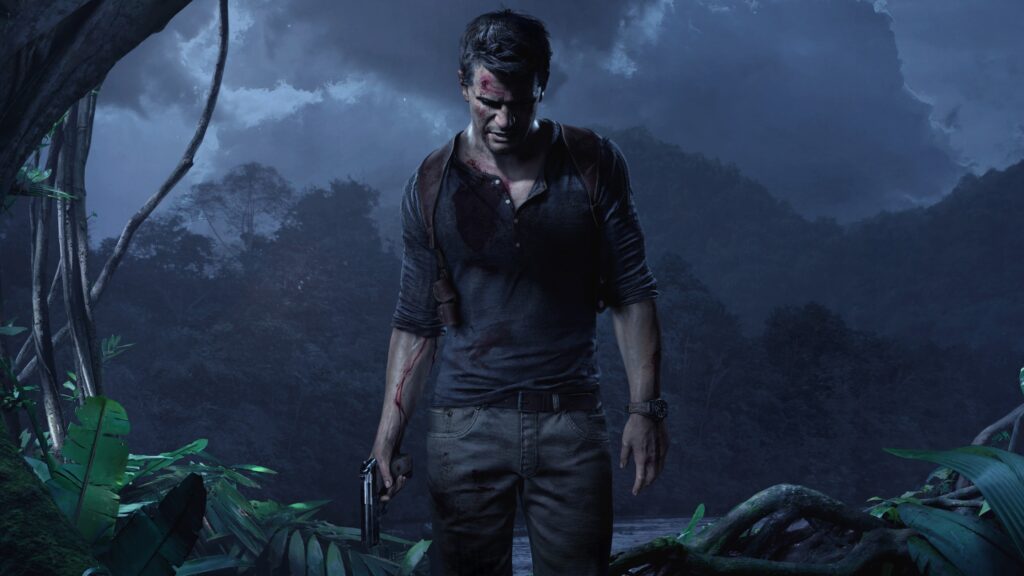
Backstory
Backstories help players understand the game’s setting and what motivation and experiences the characters had prior the main storyline. A backstory helps create a stronger bond between a playable character and a person behind the screen. And we’ve got a good example to prove it.
BB Hood – the main character from Darkstalkers – looks like an innocent person, though she is anything but. She has her own backstory which gamers follow with excitement.
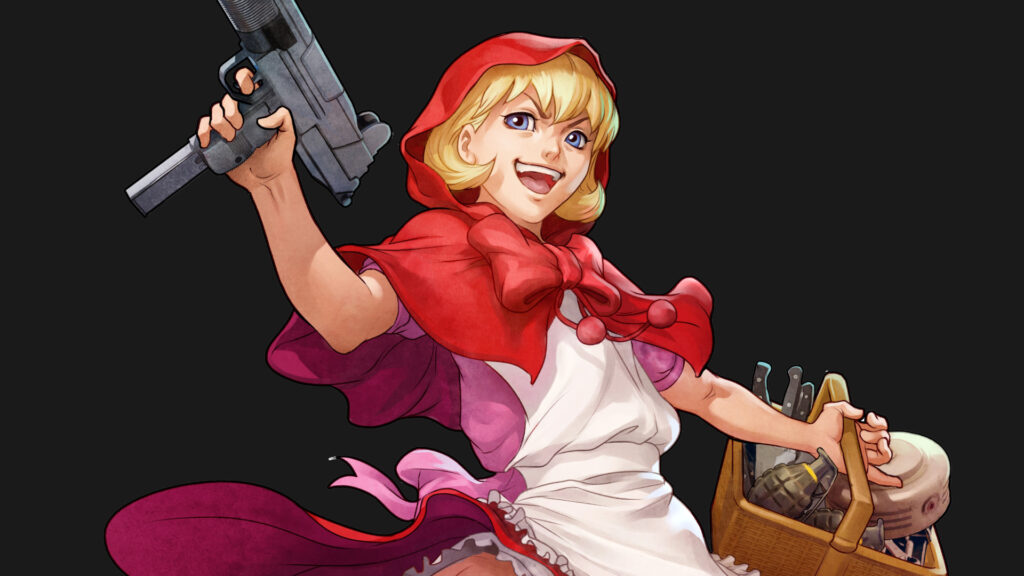
Baby Bonnie Hood is a hunter of the undead who dresses up as a cheerful Red Riding Hood to look harmless. In fact, she is a true smiling kill machine. Once monsters take the bait, she gets the guns and explosives from her basket to get the job done.
Flaws and weaknesses
Great characters aren’t perfect. Even the strongest game characters have their flaws and weaknesses, which makes them more relatable. An on-point example here would be Kratos from “God of War” series. Kratos is firstly introduced as a cruel and violent warrior – the former god of war has committed many evil acts in the past. The only thing he cares about is revenge on gods, and throughout three games (and a couple of spin-offs) Kratos will do anything to execute his vengeance.
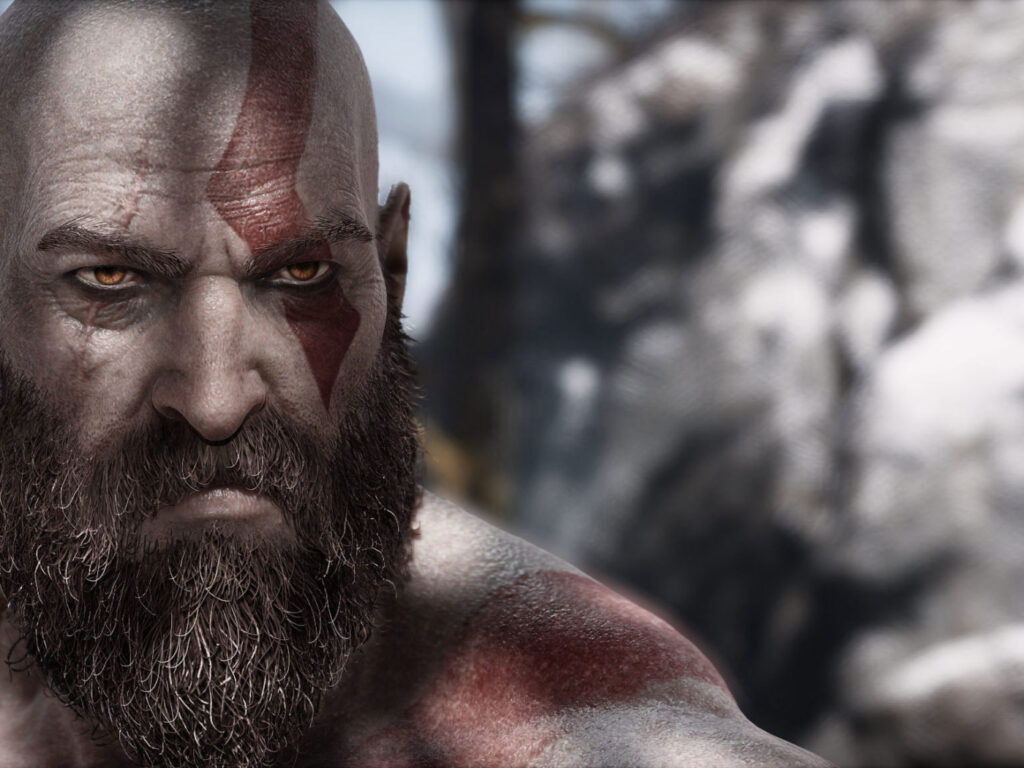
In the fourth “God of War” game, however, Kratos is given a very unusual role – he becomes a father. As a father, Kratos wants to do all he can to protect his son, Atreus, against other gods and dangers of the outside world. This desire is his one and only weakness. It turned a fearless monster into a man who has something to lose.
Appearance
The world is wonderfully diverse, and games have to reflect that. It’s a good practice to create characters with myriad personalities, races, ethnicities, and appearances to make them relevant to real people.
The game Dragon Age: Inquisition is a good example of diversity. Playing it, gamers can meet transgender characters and also characters of color. And it’s truly heartening to see more of such characters’ appearances in different game genres.

To summarize everything that’s been said, crafting a game character is just like making a real human being: you need to give them personality, special traits, food preferences even. But there are also some other rules to be followed which we’d like to share with you.
How to craft characters that truly stand out: rules from our 3D artists
Game character design requires a lot of expertise and skills, but more than that — tons, if not megatons of creativity. This process begins with the character concept design (a complete game character workflow needed to create the concept and choose a character style) and also includes such technical processes as character sketch, modeling, rigging and animation.
To help you on your journey, we asked our game artists what they find crucial when creating a new character. Here’s what they told us.
Collaboration is the key
Creating believable characters is usually a collaborative process.
The work process has to be easily understandable for everyone — from concept artists and 3D modelers to our clients’ team. And this is exactly what we practice in our workflow. Smooth communication allows our clients to develop high-quality products.
Our team starts our work on characters with a brief concept or a script, from which we get details and the main idea of the character. But we can also craft characters from scratch, if that’s needed.
Every 3D artist collaborates with our team leader and other team members, so everyone on the team is aligned and the process is under control.
At the end of each iteration, we get feedback from our client, followed by improvements and more feedback as we make progress down the pipeline.
Focus on diversity
Just imagine: there are over three billion gamers around the world! They all have different backgrounds, ethnicities, and genders. In fact, 47% of gamers don’t play games that they feel are not made for them.
Some games do a bad job at representing a diverse range of personalities. Diversity is a massive missed opportunity for many publishers and game developers.
At 3D Studios Studio, we’re lucky to work with clients who fully realize how diversity benefits players. Together we create characters that make gaming more accessible and inclusive.
For example, recently we’ve worked on a project that features characters of all races, nationalities, genders and even ages in a single game. It was a great experience!
Make a character readable, but not too stereotypical
Game characters should be easy to understand, but at the same time they shouldn’t be too generic. It’s way more fun to create multi-dimensional characters that can surprise players, but it’s also important to remember that classic stereotypes, like the muscular brute or the skinny nerd can create instantly recognizable characters.
In our work, we balance stereotypes with distinction and variety to make sure our characters immediately give the player hints about their probable personality and also feel unique and distinguishable.
Unlike 3D artists who play strictly by the rules, we like to bring new ideas to our projects because gaming, at its core, is a form of art.
Meet some of our characters
We specialize in different art styles and bring to life photorealistic, cartoon, or stylized 3D character models that feel enjoyable and memorable. Below are some of them.
Realistic General Phillips for Back4Blood
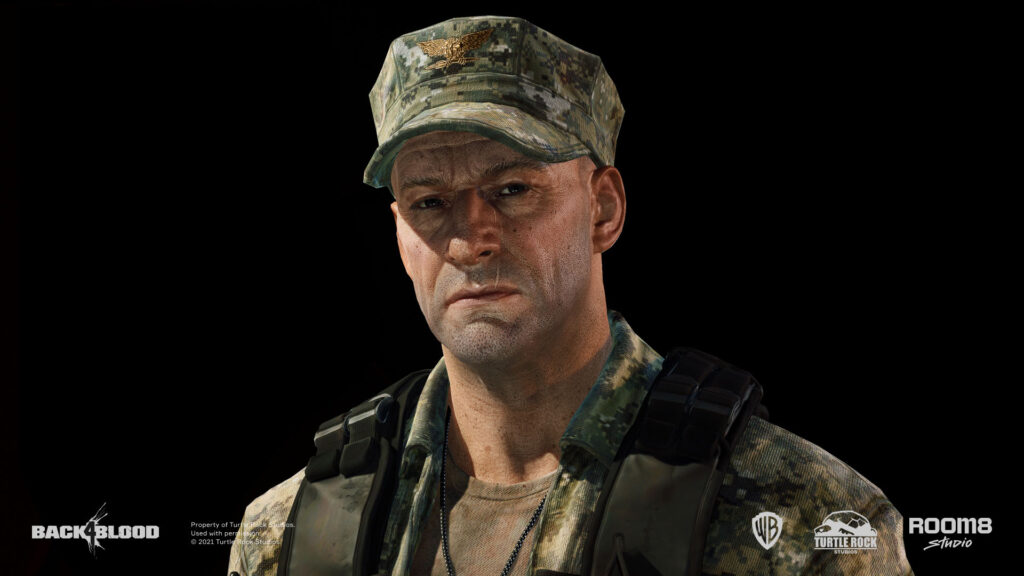
Back4Blood is a thrilling cooperative game that garnered considerable acclaim for its zombie-shooting gameplay and also for its realistic and natural characters. General Phillips is one of them.
General Phillips is a man with some stubble, wrinkles and scars on his face. The character’s personality is completed with realistic details such as military camo gear, a military cap and equipment. His expressive appearance won’t allow to confuse him with any other character.
Cartoon style 3D characters for Fall Guys
As a counterbalance to realistic style, look at our 3D cartoon characters. We created them for the ever-popular game Fall Guys. The way we designed these characters makes the game appealing to all age groups of players.
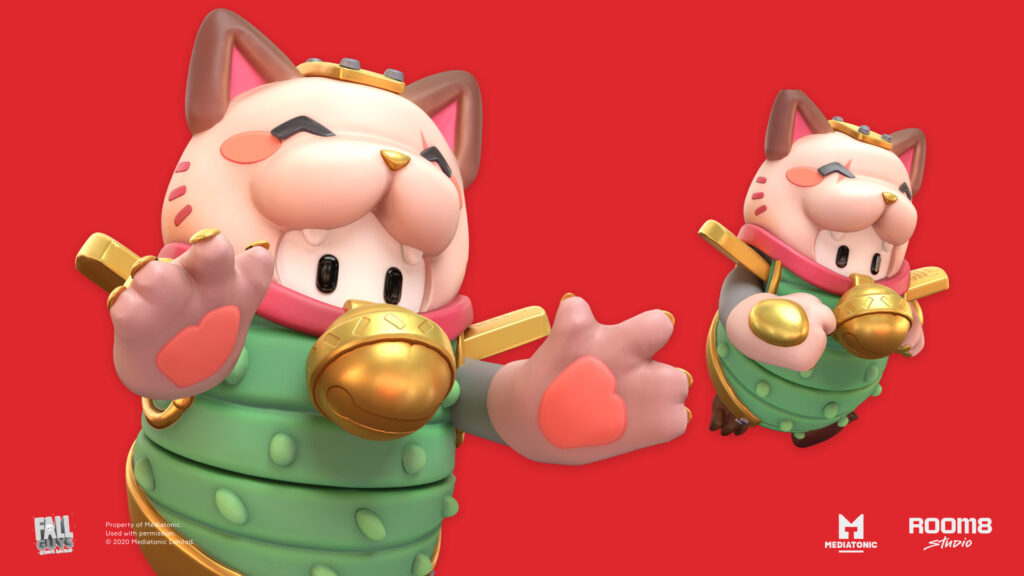
Playing with these bright and funny-shaped characters, gamers compete in a series of individual and team challenges. We are glad to be involved in creating such a fun game.
Other than these two cases, we have another interesting one to show.
Stylized character for the Amazon Games
Our 3D stylized character for the Amazon Games project impresses with its rich details. It came to us from the fictional New World. The art style represents some chic but also mystery. We were able to convey an outstanding and inscrutable personality through design.
We reckon this character will make players want to find out more about the game, once they see the trailer.

Bottom line
We hope this article has clearly demonstrated that video game character design requires a lot of expertise and skills.
If you’re currently considering character creation for your video game, let us know. We can help you create amazing game characters.



